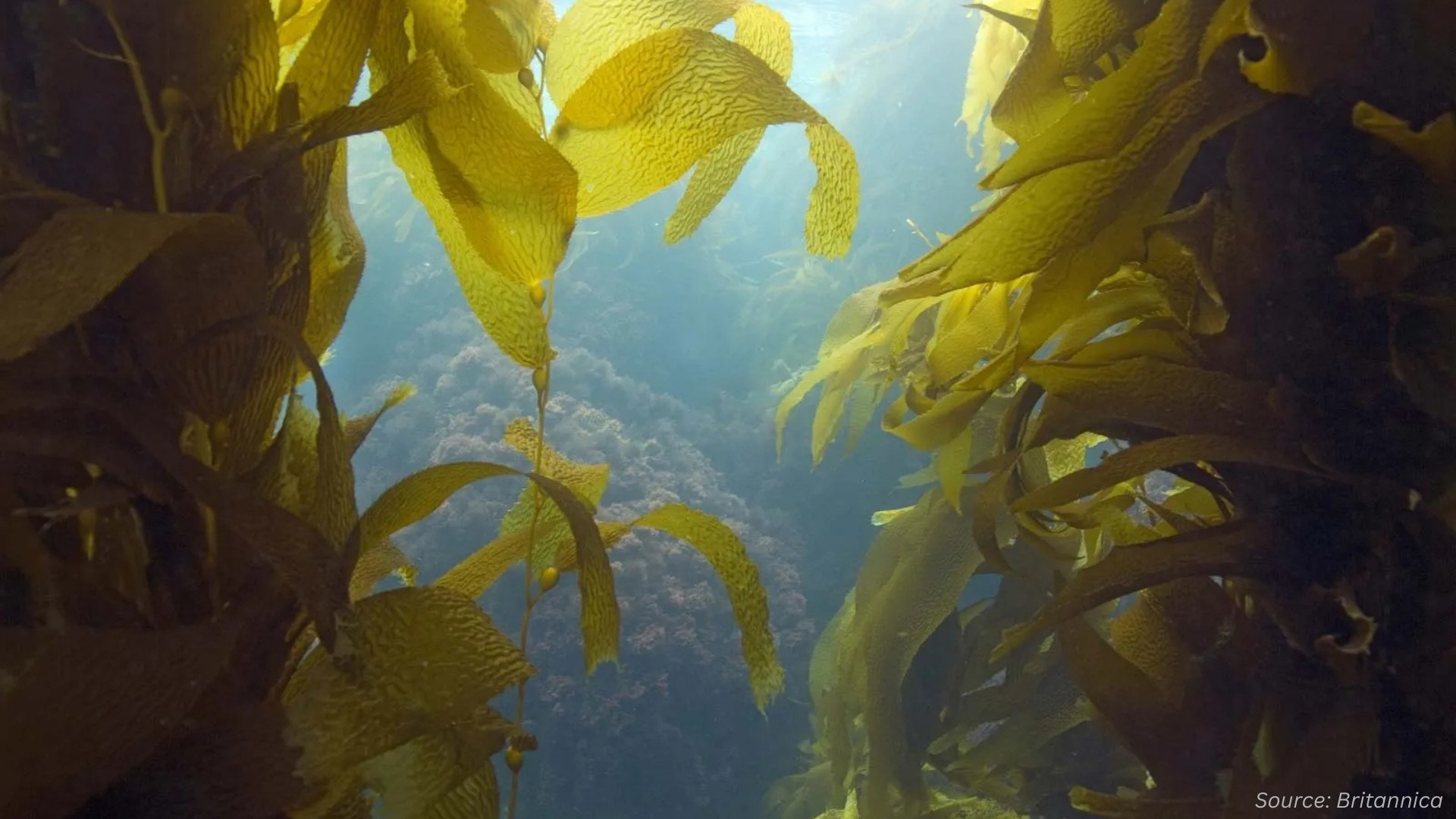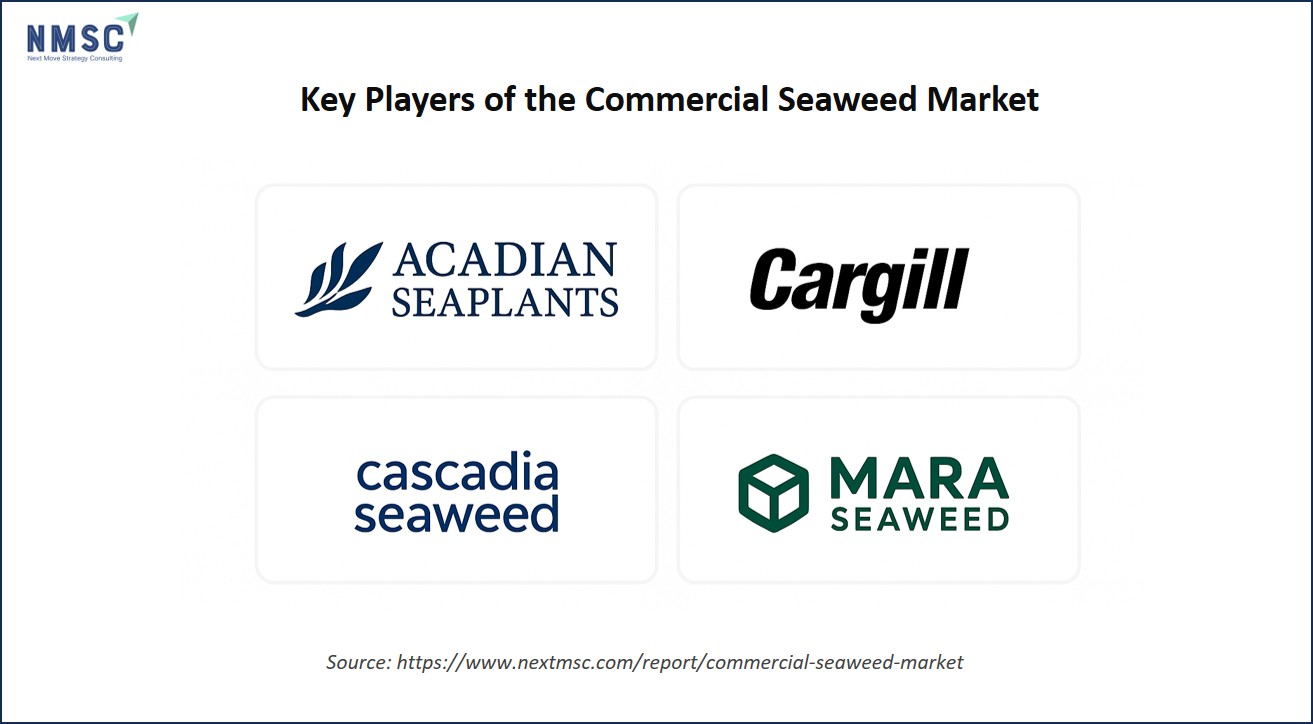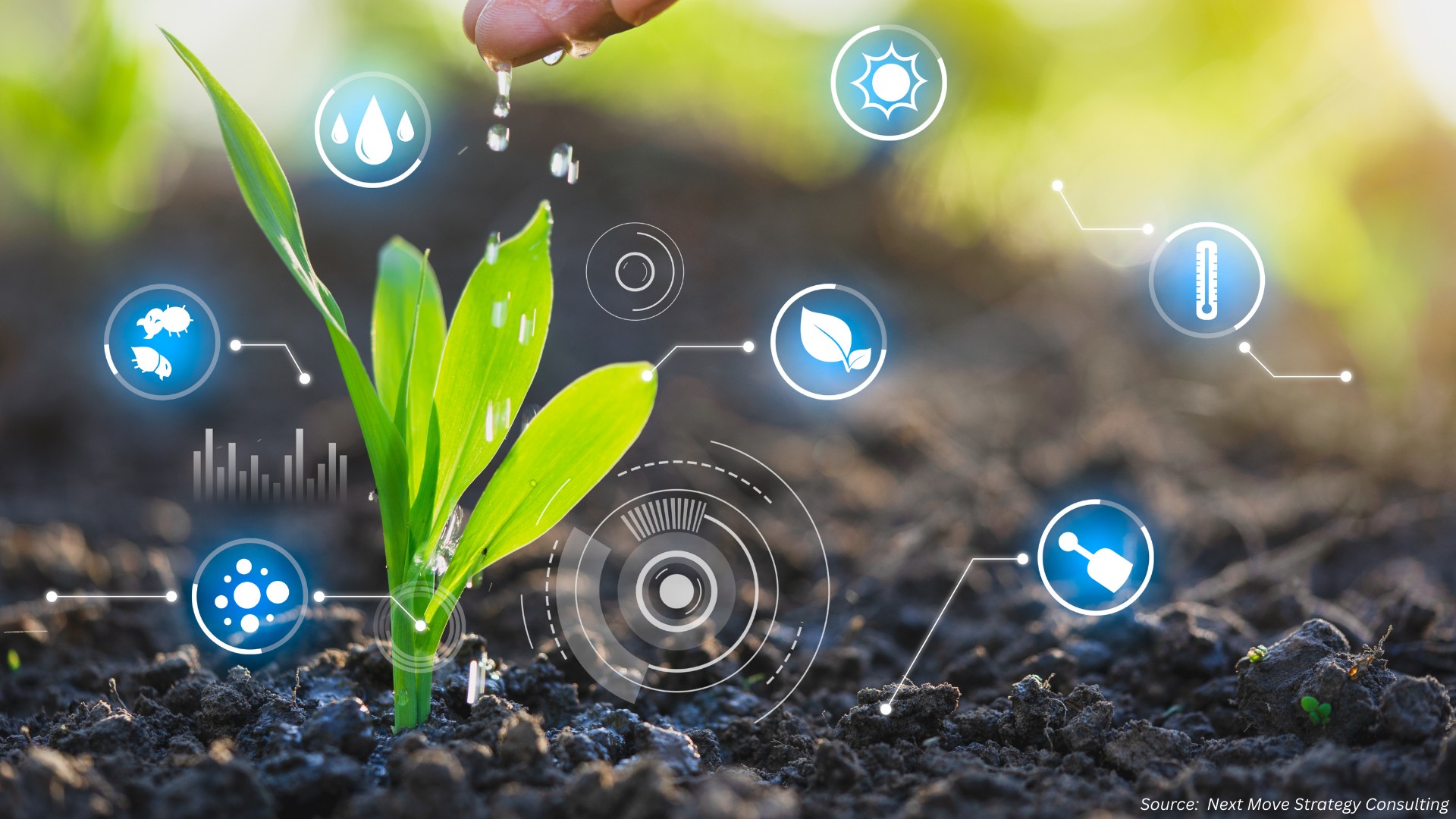What Is Driving the Growth of the Commercial Seaweed Market?
Published: 2025-09-12

The commercial seaweed market has emerged as one of the most dynamic segments of the global food and agricultural industries. From traditional Asian cuisines to modern industrial applications such as hydrocolloids, fertilizers, and animal feed, seaweed is no longer a niche product. According to Next Move Strategy Consulting, the global industry was worth about USD 12.04 billion in 2023 and is set to grow at a CAGR of 6.52% by 30. This rising demand highlights the importance of understanding the scope, types, and trends shaping this market today.
What Is the Size and Scope of the Industry?
Commercial seaweed is big business. Every year, around 7.5–8 million tonnes of wet seaweed are harvested and processed globally. While food products dominate this demand, hydrocolloids such as agar, alginate, and carrageenan form the backbone of the industrial segment. Beyond this, seaweed extracts for fertilizers and animal feeds, though smaller in value, are gaining traction as interest in organic farming rises.
In simple terms, the industry is not only large in volume but also diverse in its applications. Food drives most of the revenue, but industrial derivatives and agricultural uses are strengthening the overall ecosystem.
How Is Seaweed Cultivated and Harvested Worldwide?
Seaweed harvesting and cultivation are carried out in more than 35 countries, from cold waters to tropical zones. Over time, farming has become increasingly dominant. In fact, more than 90% of food-grade seaweed now comes from cultivated sources, a shift that has allowed the industry to meet growing demand without exhausting wild stocks.
This cultivation boom has transformed the industry into a reliable, scalable sector. Countries such as China, Japan, and South Korea lead in production, setting the stage for global supply chains.
Which Types of Seaweed Dominate the Market?
Commercial seaweeds fall broadly into three categories:
-
Brown seaweeds (Phaeophyceae): These are often large, sometimes growing up to 20 metres, and are commonly used in food and alginate production.
-
Red seaweeds (Rhodophyceae): Smaller in size, these species are valuable for agar and carrageenan extraction, along with their role as food.
-
Green seaweeds (Chlorophyceae): Typically, small and less commercially significant, though they hold potential for future product development.
Among these, brown and red seaweeds dominate both in volume and in commercial applications.
What Are the Key Species in Global Trade?
Different species play unique roles in the market. For food, kombu (Laminaria japonica) is a leading product, with China producing nearly 5 million wet tonnes annually. Wakame (Undaria pinnatifida), largely farmed in South Korea, reaches around 800,000 wet tonnes, while nori (Porphyra species) accounts for 600,000 wet tonnes in Japan. Interestingly, nori commands the highest price at about US$ 16,000 per dry tonne, compared to kombu at US$ 2,800 and wakame at US$ 6,900.
On the industrial side, hydrocolloids remain critical. Annually, 1 million wet tonnes of seaweed yield about 55,000 tonnes of hydrocolloids, valued at US$ 585 million. This is divided into alginate (US$ 213 million), agar (US$ 132 million), and carrageenan (US$ 240 million).
Which Seaweeds Are Used for Agar and Where Are They Found?
Agar, one of the most important seaweed-derived products, primarily comes from Gelidium and Gracilaria species.
-
Gelidium is harvested in countries such as Spain, Portugal, Morocco, France, Japan, Korea, Mexico, and Chile. It thrives in rocky coastal areas at depths of 2–20 metres, preferring cool waters and strong wave action.
-
Gracilaria is more versatile and widely cultivated in regions such as Chile, China, Indonesia, Viet Nam, and South Africa. It grows well in sandy or muddy bottoms, adapts to diverse environments, and is highly suitable for farming.
This dual supply chain—premium but limited Gelidium, and scalable Gracilaria—keeps agar production stable and globally distributed.
How Are Agarophytes Harvested and Farmed?
Gelidium remains largely wild-harvested. Traditional methods include collecting storm-cast seaweed, diving, or using machines that minimize bed damage. To ensure sustainability, collectors often preserve holdfasts so that plants can regrow.
By contrast, Gracilaria is extensively farmed. Techniques include anchoring cuttings in sediments, rope cultivation, and pond systems. In pond farming, harvest cycles are completed every 35–45 days, followed by drying on ground or raised platforms. This makes Gracilaria a more reliable large-scale source for agar extraction.
Who Are the Key Players in the Global Commercial Seaweed Market?
-
Acadian Seaplants – A global leader from Canada specializing in cultivated seaweed products for agriculture, animal nutrition, and food industries.
-
Cargill Inc. – A major U.S. agribusiness that integrates seaweed-derived hydrocolloids like carrageenan and alginate into its food solutions portfolio.
-
CP Kelco – A key producer of nature-based hydrocolloids, supplying carrageenan and other seaweed extracts for food, beverage, and personal care sectors.
-
Cascadia Seaweed – A Canadian firm advancing sustainable seaweed farming along the Pacific Coast, focusing on food, feed, and environmental solutions.
-
Mara Seaweed – A U.K.-based company producing premium, sustainably harvested seaweed as a natural seasoning and health-focused food ingredient.
What Do These Trends Mean for the Market?
Taken together, these insights reveal a market that is both robust and evolving:
-
Food demand, particularly in Asia, remains the largest driver.
-
Cultivation has revolutionized the industry, making supply sustainable and scalable.
-
Hydrocolloids such as agar, alginate, and carrageenan represent high-value industrial applications.
-
Wild-harvested species continue to support premium markets but face sustainability challenges.
-
Niche uses like seaweed meal and fertilizers are growing, particularly alongside global interest in organic farming.
Next Steps: What Should Stakeholders Focus On?
To unlock future growth, stakeholders across the commercial seaweed value chain should:
-
Invest in cultivation research and innovation to increase yields of high-value species.
-
Implement stronger sustainability measures for wild harvesting, ensuring long-term viability.
-
Expand infrastructure for scalable species like Gracilaria, which offer consistent supply.
-
Diversify product offerings by exploring extracts for fertilizers, animal feeds, and bio-based materials.
-
Monitor price and demand dynamics closely to stay ahead of shifts in consumer and industrial markets.
Conclusion
The commercial seaweed market has grown into a multi-billion-dollar industry, led by food applications but increasingly diversified through industrial and agricultural uses. The shift from wild harvesting to large-scale cultivation has not only stabilized supply but also opened new opportunities for innovation. Going forward, the industry’s success will depend on balancing sustainability with expansion, ensuring that seaweed continues to support both global diets and industrial innovation.
About the Author
 Joydeep Dey is a seasoned SEO Executive, Content Writer, and AI expert with over 2½ years of experience in digital marketing and artificial intelligence. He specializes in SEO strategy, impactful content creation, and developing data-driven, AI-powered solutions that enhance online visibility and engagement. With a strong foundation in natural language processing and emerging AI technologies, Joydeep is known for simplifying complex concepts into clear, actionable insights.
Joydeep Dey is a seasoned SEO Executive, Content Writer, and AI expert with over 2½ years of experience in digital marketing and artificial intelligence. He specializes in SEO strategy, impactful content creation, and developing data-driven, AI-powered solutions that enhance online visibility and engagement. With a strong foundation in natural language processing and emerging AI technologies, Joydeep is known for simplifying complex concepts into clear, actionable insights.
About the Reviewer
 Debashree Dey is a skilled Content Writer, PR Specialist, and Assistant Manager with strong expertise in Digital Marketing. She specializes in crafting visibility strategies and delivering impactful, data-driven campaigns. Passionate about creating engaging, audience-focused content, she helps brands strengthen their online presence. Beyond work, she draws inspiration from creative projects and design pursuits.
Debashree Dey is a skilled Content Writer, PR Specialist, and Assistant Manager with strong expertise in Digital Marketing. She specializes in crafting visibility strategies and delivering impactful, data-driven campaigns. Passionate about creating engaging, audience-focused content, she helps brands strengthen their online presence. Beyond work, she draws inspiration from creative projects and design pursuits.















Add Comment